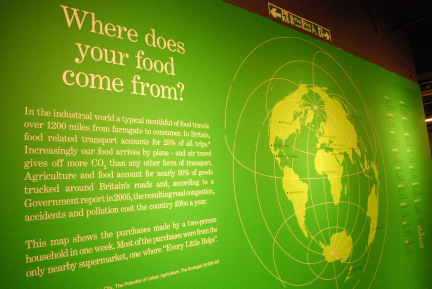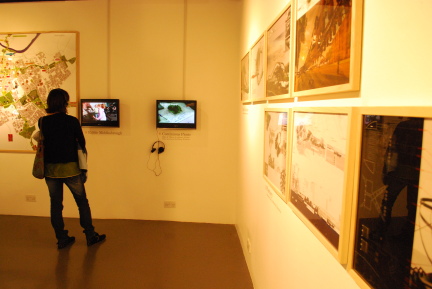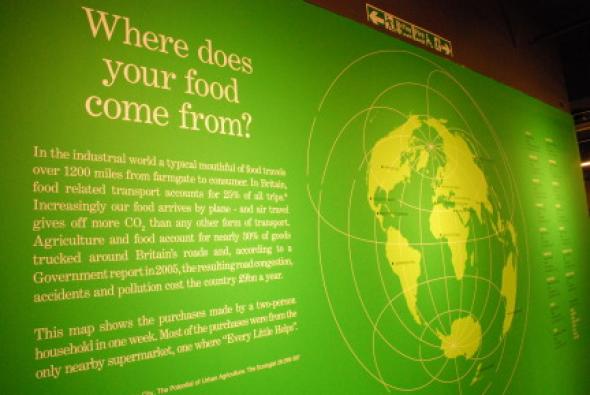Dug-up grassroots: How to baffle Mother Nature's best
There are two ways to ripen a tomato. One, let it hang on the vine until it's so juicy it plops heavy into your hand. The other way is less romantic. Pick it while it's still green, pack it in a box and hope it blushes as it travels across the country.
There are also two ways to approach the recent intrigue with all things containing the words "organic", "sustainable" and "local". One, let farmers and passionate growers teach the rest of us how to grow our own produce, work with the government to increase green space and show us why dirty fingernails and Saturdays in the garden are worth the effort. The other way, which unfortunately seems to be taking root, is to make what's good and natural into a trendy statement that scorches out the very people who could help.
The recent "London Yields" seminar at The Building Centre demonstrated how far a trend can take a good thing, smack big words and fancy diagrams on it, and leave the entire audience doodling clueless curlicues in their Moleskine notebooks.

Photo Info: Farmacy by Samantha Lee. Farmacy is a creation that would wash,
dry, grind and distill herbs for commercial use along Regent’s Canal. Photo by CJ Lotz.
"London Yields" comprised an exhibit of photographs and diagrams that illustrated the future of urban gardening: wine grape vines attached to railway networks, windmills pumping water through buildings, graphs listing the angle of slope as sun meets building, meal assembly centres. Most of the diagrams and models were awe-inspiring but difficult to understand unless you've spent your days with a calculus textbook, not a trowel.
The exhibit's premier event was a seminar by a handful of governmental figures, architects and artists on 27 May. The program, 'Getting Urban Agriculture off the Ground', required attendees to fork over 35 quid to sit and listen.
The first speaker, Mark Brearley from Design for London, showed green architectural possibilities via a slide show presentation. The graphs were colorful, intricate and completely confusing. He compared governmental work in agricultural funding to religion: you need faith, a good narrative to convince the government and an unwavering belief to trudge through the work. I'm not converting. Large-scale projects, of course, need funding, but they should be backed by citizens who understand the small, daily practices of gardening. It's blasphemous to leave the flock out of the picture when the priesthood's cynical assurances are over everyone else's heads.

Photo Info: One of the best displays: a simple chart showing the path from
plant to plate. Photo by CJ Lotz.
More money should be invested in practical projects like Capital Growth, a governmental program that handed out garden canisters to families, churches and schools. Community leaders and heads of neighborhoods asked for upfront investments from Capital Growth, and then gathered their neighbors and friends to plant and harvest edible gardens. The group's web site features a comprehensive map of local garden plots throughout London. It's a success story that ties communities to the land and their neighbors.
Capital growth offers access to equipment, volunteers and gardening advice, and its aim is to create 2,012 new growing spaces by 2012. At the moment, Capital Growth isn't funding any more small projects, but they should look into a continued partnership between gardeners and their communities.

Photo info: A gallery viewer watches a video in the exhibit space. Photo by CJ Lotz.
It's fun to dream about big projects in the sky and under the tube. But currently, only 8 percent of London's land area is farmed. Eighty-one percent of England as a whole is farm land, according to The Mayor's Food Strategy, 2006. Before huge investments fund new projects, let's simply start to increase London's edible spaces by promoting roof top and community gardens.
Let form meet function. If we want people to get their hands dirty, keep funding options open to everyone, distribute information free and wide and prioritize people who know the earth.
www.londonfoodstrategy.org.uk/upload/pdf/LDA_Food_...
You may also like:
Mute Books Orders
For Mute Books distribution contact Anagram Books
contact@anagrambooks.com
For online purchases visit anagrambooks.com







